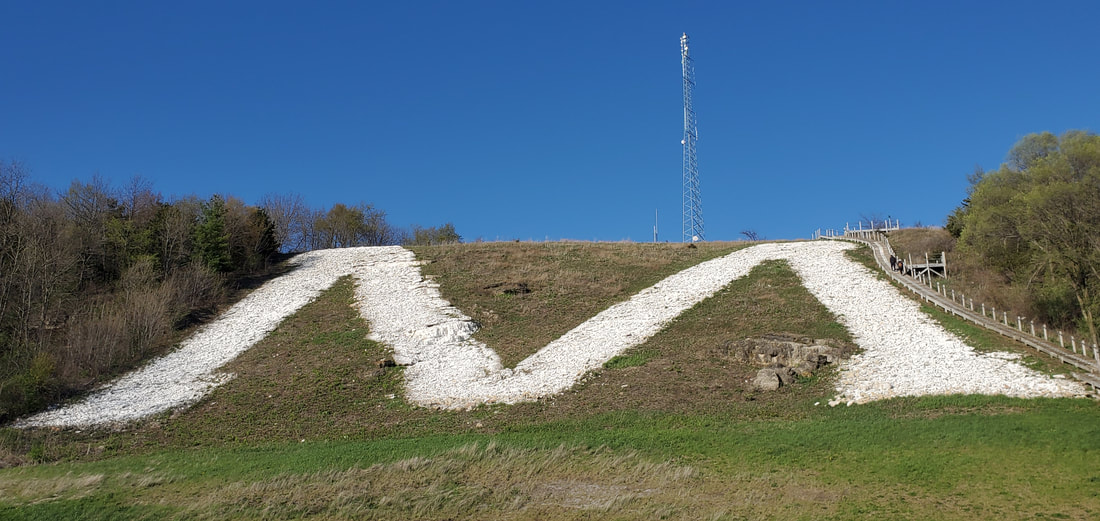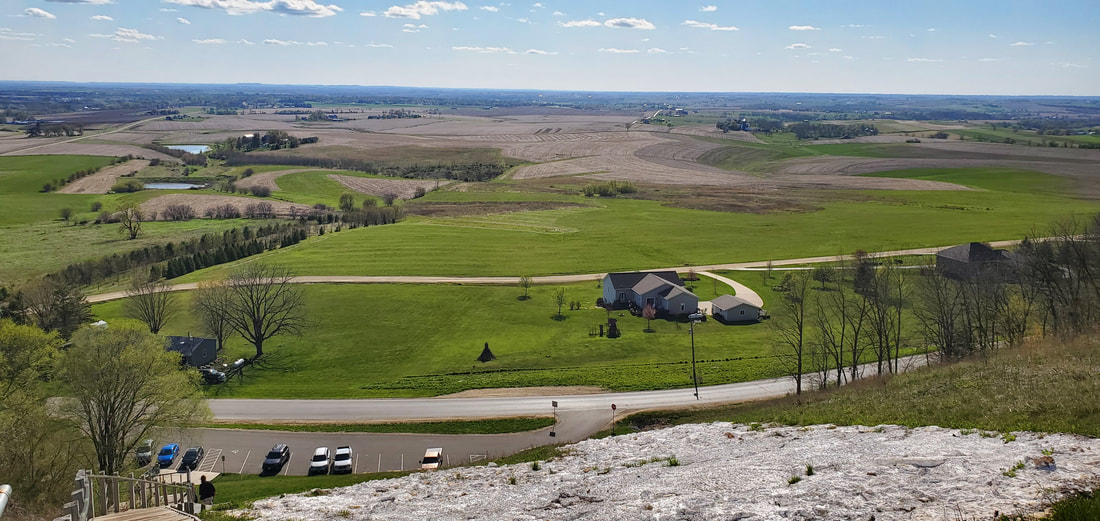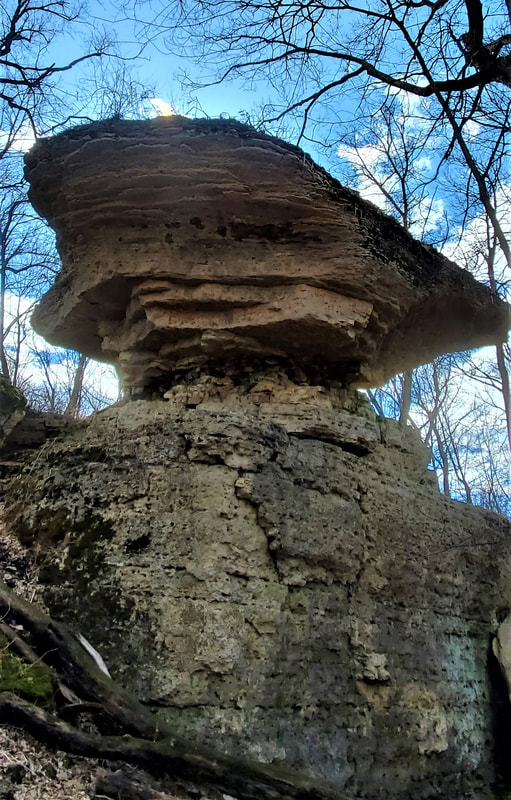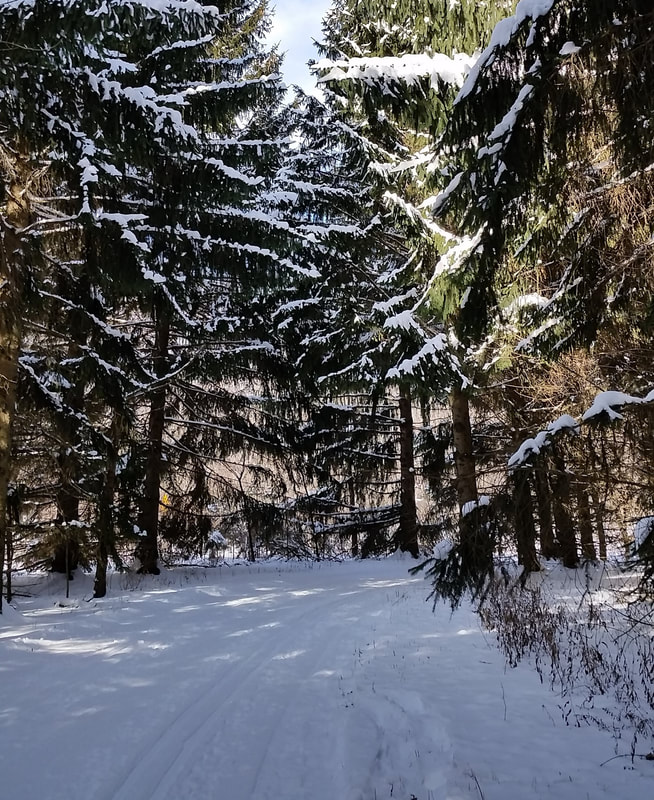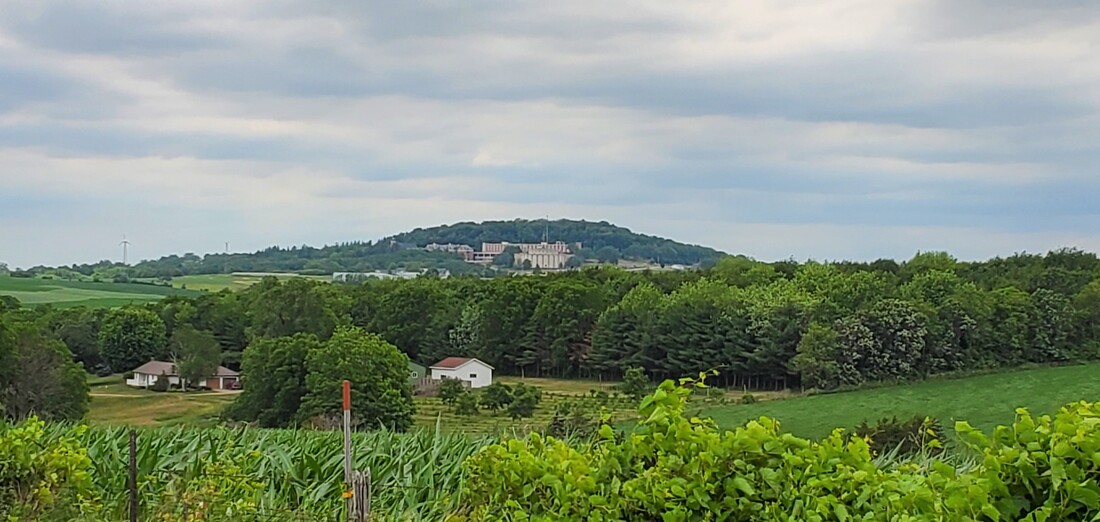Blue Mounds. Belmont Mound. Platteville Mound. Sinsinawa Mound. This succession of mounds marks my passage home.
The mounds’ origins confound many a local person. Some mistakenly think they are Native American structures, confusing them, no doubt, with the area’s many burial mounds. Others mistakenly wonder if the glaciers scooped away their edges, but this is the Driftless Area, precisely where the glaciers never reached.
Rather, the series of mounds are monadnocks, individual freestanding remnants of an ancient topography that once covered the Driftless. In these last remaining fragments, a hard Niagara limestone cap that formed 430 million years ago at the bottom of Silurian seas sits atop a crumbing shale. Eventually these too shall pass.
The Niagara layer becomes more prominent and intact to the northeast, stretching to the Great Lakes and ultimately to Niagara Falls.
But although the mounds are all of a type and kind, each has its own story to tell. Each welcomes me back to my own personal landscape.
Blue Mounds
The Blue Mounds are two interconnected mounds rising 300 to 500 feet above the surrounding landscape near Mt. Horeb, WI. My wife Dianne and I know Blue Mounds mostly in winter, as we travel to the state park at least once each year to cross-country ski on the miles of groomed trails tracing the base of the mound and winding into the valleys. Last winter we ascended a side-spur to the top plateau, where we looped between the East and West viewing towers. The downslope was too steep for our tastes, though, so we carried our skis down a switch-backing foot trail to rejoin the ski paths. Each year we add another layer of memory to Blue Mounds.
Belmont Mound
We’ve long known the base of Belmont Mound from a bicycle loop that takes us past the park and the neighboring historic site where a cluster of white buildings once housed Wisconsin’s first state capital. But only recently did we venture on foot to the top of the 400-foot mound that caps the tiny Belmont State Park. As at Blue Mounds, a viewing tower rises above the tree level. It once offered expansive views across the Driftless, but access to the tower has now been cut off. Over the years the tower has brought trouble and tragedy along with its scenic overlooks, and is slated for demolition.
Our hike through a typical Driftless woods took a curious turn, though, when we descended into a playground of tossed and tumbled rocks, the most impressive of which is the Devil’s Table, a towering flying saucer-shaped wedge of bedrock with its base nearly eroded from beneath.
William Randolph Smith, a delegate to the Wisconsin Constitutional Convention of 1846 hosted at Belmont, described the view from the top of the mound long ago when the prairie had not yet fully succumbed to the plow: “An ocean of prairie surrounds the spectator, whose vision is not limited to less than thirty or forty miles.… In all directions, are scattered the incipient farms of the settlers.”
Platteville Mound
When COVID restrictions began in Spring 2020, Dianne and I blew away our housebound blues by climbing the 266 stairway steps alongside the iconic letter M that we’d most often viewed from a distance. The 241-foot tall, 214 foot wide letter M had been constructed in 1937 to commemorate the University of Wisconsin-Platteville’s original status as the Wisconsin School of Mining. The M is revitalized each year with a fresh coat of whitewash.
We’d climbed it once or twice years before. But this day, at the top of the mound, we found and hiked a trail along the spine of the elongated mound. Here, too, at the far edge of the trail, lay a playground of immense, tumbled boulders lying askew in every direction imaginable, as if the bases of the rocks had been kicked out from beneath.
Sinsinawa Mound
Sinsinawa Mound was established in 1847 as a motherhouse to Sinsinawa Dominican sisters, but before then had been Meskwaki land. Sinsinawa Mound is private property, but guests may request to hike its trails and must register at the office. A hike at Sinsinawa begins amid modernistic and historical architecture and rises into the silence of the woods.
Of the four mounds, I knew Sinsinawa first because its sisters taught me in elementary school in Dubuque. The sisters treated us to occasional visits to the then-brand new round church and Sinsinawa facilities. As a teacher myself, I’ve brought my own students to Sinsinawa Mound for nature writing retreats, completing the circle.
* * *
Knowing a landscape, I tell my students, is like studying a rock cut along a road. At the base, know its geology, how the land was formed, shaped, and shifted. At the next level above, learn about the ancient ones who once lived there and the tragedies of the forced removal of the indigenous peoples. In the next layer, learn the pioneer and Euro-American settler story. As you near the modern surface, listen to what the land is saying today. What harms has it suffered, and how may it be healed? The topsoil is your personal experience on the land: sink your feet into it and add your story.
Then, when you are returning from away and you see your landscape emerging at the horizon, you will know that you are home.
-- Kevin Koch
June 2021
